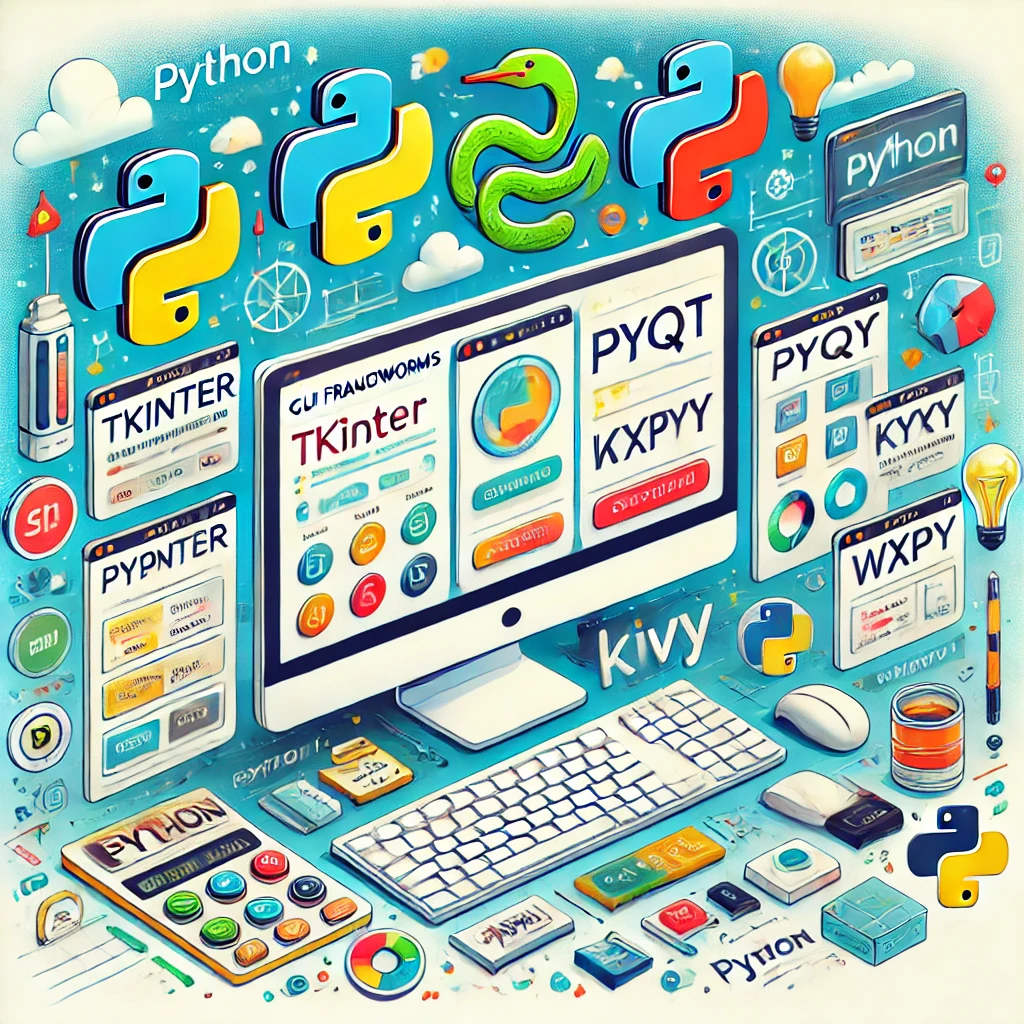Best Python GUI Frameworks for Developers
Graphical User Interfaces (GUIs) are essential to software development, providing users with a visually appealing and interactive way to interact with applications. Python offers a variety of frameworks for building GUIs, each with its own features and strengths. Here’s a list of the best Python GUI frameworks for developers in 2025.
1. Tkinter
Overview
- Built-in Python Library: Comes pre-installed with Python.
- Ease of Use: Perfect for beginners due to its simplicity.
- Cross-Platform: Works on Windows, macOS, and Linux.
Key Features
- Basic widgets like buttons, labels, and text boxes.
- Simple and lightweight, it is ideal for small-scale projects.
Best For
- Beginners and small desktop applications.
2. PyQt
Overview
- Feature-Rich: Based on the Qt framework.
- Commercial and Open Source: Offers both licensing options.
Key Features
- Rich set of widgets for complex GUIs.
- Supports multimedia, web rendering, and more.
- Advanced styling with Qt Designer.
Best For
- Large, feature-rich desktop applications.
3. Kivy
Overview
- Open-Source: Designed for multi-platform applications.
- Touch Support: Perfect for mobile and tablet apps.
Key Features
- Multi-touch support.
- Supports Android, iOS, Windows, macOS, and Linux.
- Highly customizable with its own graphics engine.
Best For
- Cross-platform mobile and desktop applications.
4. wxPython
Overview
- Native Look and Feel: Leverages native widgets.
- Cross-Platform: Runs on Windows, macOS, and Linux.
Key Features
- Provides a native look for GUIs.
- Robust and well-documented.
- Ideal for professional desktop apps.
Best For
- Developers looking for native performance.
5. PySide (Qt for Python)
Overview
- Qt Integration: Similar to PyQt but LGPL licensed.
- Cross-Platform: Supports all major operating systems.
Key Features
- Easy-to-use API for designing UIs.
- Full support for Qt tools like Qt Designer.
Best For
- Developers requiring LGPL licensing or Qt-based GUIs.
6. PyGTK
Overview
- Open Source: Based on the GTK+ toolkit.
- Linux-Friendly: Works well with Linux environments.
Key Features
- Modern UI widgets.
- Seamless integration with GNOME desktops.
Best For
- Applications targeted at Linux users.
7. Dear PyGui
Overview
- High Performance: Built using C++ under the hood.
- Modern Features: Designed for modern GUIs with GPU acceleration.
Key Features
- Real-time rendering and fast performance.
- Ideal for data visualization and interactive apps.
Best For
- Developers building visually complex applications.
8. Flexx
Overview
- Web-Based GUI: GUIs run in web browsers.
- Python-Powered: Uses Python to define UI and logic.
Key Features
- Supports HTML and CSS for styling.
- Lightweight and flexible.
Best For
- Developers wanting to create web-compatible desktop apps.
Conclusion
The right Python GUI framework depends on your project requirements, skill level, and target platform. For beginners, Tkinter is a great starting point, while frameworks like PyQt, Kivy, and wxPython are ideal for professional and feature-rich applications.
Need help selecting or working with a Python GUI framework? Contact SoftSunrise for expert guidance and support!




